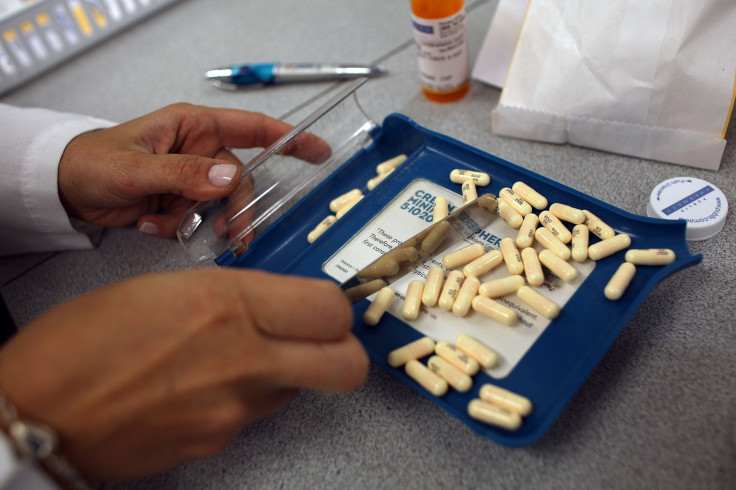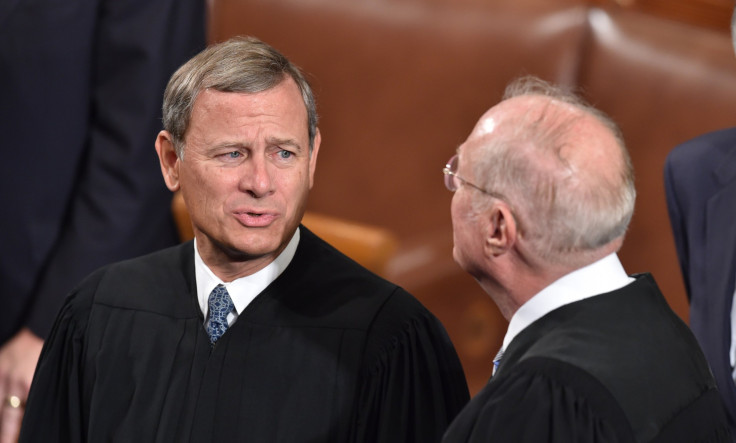Drug Price Debate: Can An Obscure Supreme Court Patent Case Lead To Lower Prescription Prices?

Could a solution to lowering or controlling the price of prescription drugs in the United States lay in the hands of the Supreme Court justices? Quite possibly, argues an article published Friday on life sciences site STAT News.
The article discusses a case argued before the Supreme Court Monday that looks at the way patents are challenged, saying the case could “leave a big mark on medicine” and have “huge” consequences for the pharmaceutical industry. The thinking is the case could change the way patents are challenged and, for drug companies, loosen brand-name prescription drugs’ protections from cheaper generic drugs.
The article generated a buzz within the biosciences and healthcare worlds, but legal experts are doubtful that the case, Cuozzo Speed Technologies, LLC v. Lee, would have a significant impact on the patents that are so vital to the prices of brand-name prescription drugs — even in the unlikely event that the justices rule in favor of the plaintiff.
“I think that it won’t actually practically matter for pharmaceutical patents,” said Lisa Ouellette, an assistant professor of law at Stanford University. She was “somewhat skeptical” after reviewing Monday's oral arguments that a majority of the Supreme Court justices would rule in favor of the plaintiff, Cuozzo Speed Technologies, whose patent for a speedometer was ruled invalid after the company Garmin challenged it. A lower court ruled that the way the patent was deemed invalid was permissible, but Cuozzo has argued otherwise.
A patent is a legal right to a particular invention, similar to the way copyrights protect books or movies. In U.S. law, it protects “any new and useful process, machine, manufacture, or composition of matter, or any new and useful improvement thereof.” One of the patent's basic purposes is to encourage advancements in technology by ensuring inventors have — for a time — a monopoly on their creations and are therefore able to profit from them.
Patents can be challenged, too, often by competitors aiming to reap profits from an invention without infringing on its patent. In the world of medicines, this system plays a huge role in allowing pharmaceutical companies to set high prices for brand-name drugs, because with a patent, they have no competition forcing them to drop their prices.
Until generic drugmakers enter the picture.
“Generic manufacturers want to get in the market as soon as they can,” Jacob Sherkow, an associate professor of law at New York Law School, said. “As soon as it’s possible for them to challenge drug patents they do so. They do not just wait around until patents expire,” he added, explaining that generic drugmakers challenge brand-name ones "very aggressively."
In the current system, a patent can be challenged in one of two ways. One is to go through a federal court. Another is to go through the Patent and Trademark Office through a procedure known as Inter Partes Review. Those two venues use two different standards for the same purpose of examining a patent and deciding whether it's valid.
What Cuozzo Speed Technologies contends is that the standard used at the Patent and Trademark Office, known as the Broadest Reasonable Interpretation, makes it easier to render a patent invalid, because it broadly interprets whatever invention the patent claims to protect. Is it permissible to have two different standards, when the wider the patent's claim, the easier it is to find ways that the invention is not as innovative as it claims to be?
“It’s a very extraordinary animal in legal culture to have two different proceedings addressing the same question that lead to different results,” Chief Justice John Roberts noted during Monday's oral arguments.

If two different systems exist to challenge a patent's validity, and one is supposedly easier than the other, it makes sense that the pharmaceutical industry would oppose or feel threatened by the easier option.
The catch, both Sherkow and Ouellette said, is that pharmaceutical companies' patents are “less ambiguous than for the high-tech patents,” in Ouellette's words, that are often challenged in the patent office.
Out of more than 4,250 petitions for patent challenges through the patent office, only 5.36 percent, or 228 petitions, were for patents listed in the FDA's Orange Book of approved drugs as of mid-March, analysis by Sherkow has shown. In other words, this two-tiered system doesn't necessarily put the drug industry at a disadvantage.
By comparison, drug companies' patents face growing pressure in court, given a recent uptick in patent litigation filings related to new drug applications, a recent report by the analytics company Lex Machina has found.
From 2009 to 2013, an average of 269 such cases were filed. That number jumped to 451 for the years 2014 to 2015, in a sign that “the pharmaceutical industry is feeling greater urgency and things are getting more intense,” Brian Howard, legal data scientist for Lex Machina, told the publication Corporate Counsel.
Pharma Patent Battles Seeing Steep Increase: The number of patent litigation filings… https://t.co/O1ZKMVUb1E pic.twitter.com/CMUAJ3bzgZ
— Jena Leibowitz (@Jena_ALM) April 25, 2016
In this pressurized landscape, pharmaceutical industry trade groups have not missed the opportunity to weigh in on patent debate by way of the Supreme Court case. PhRMA, or Pharmaceutical Researchers and Manufacturers of America, submitted an amicus brief on the side of the plaintiff. It has publicly highlighted elsewhere that the average cost of developing a drug anew comes to $2.6 billion; in its brief, it said, “Meaningful patent protection is required to justify that investment.”
Another reason pharmaceutical companies might be affected, or would feel compelled to weigh in on the case, is because the current system allows those challenging its patents to take two separate stabs at doing so, and not necessarily because its patents are being invalidated left and right through the supposedly "easier" system.
In the current system, "You get a second bite of the apple in trying to get out of patent infringement,” Ouelette explained.
Should the Supreme Court rule in favor of the plaintiff and say that the patent office is wrong, brand-name pharmaceutical companies would likely benefit, because their challengers could end up with one less avenue to try to invalidate their patents.
Of course, it all depends on what the Supreme Court justices say in their decision, expected by the end of June. But for the majority of Americans who worry about the affordability of prescription drugs, either way, that ruling is unlikely to provide much relief.
Editor's note, May 3, 1:10 p.m. EDT: A previous version of this article presented outdated data on patent challenges through the patent office, stating that 4 percent of petitions were for patents in the FDA's Orange Book of approved drugs. The article has been revised to reflect that as of mid-March, more than 5 percent of petitions were.
© Copyright IBTimes 2024. All rights reserved.





















